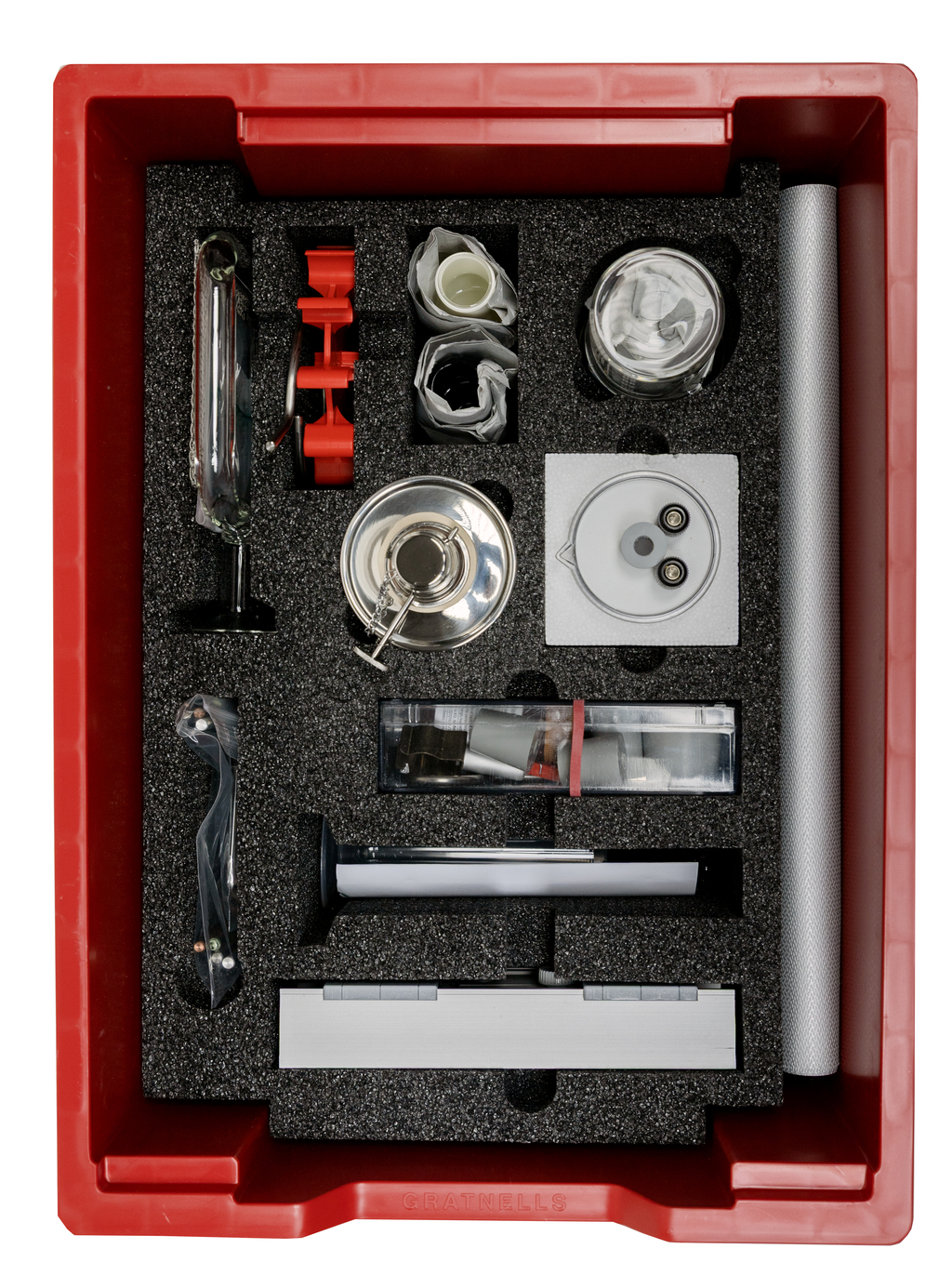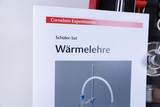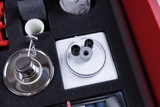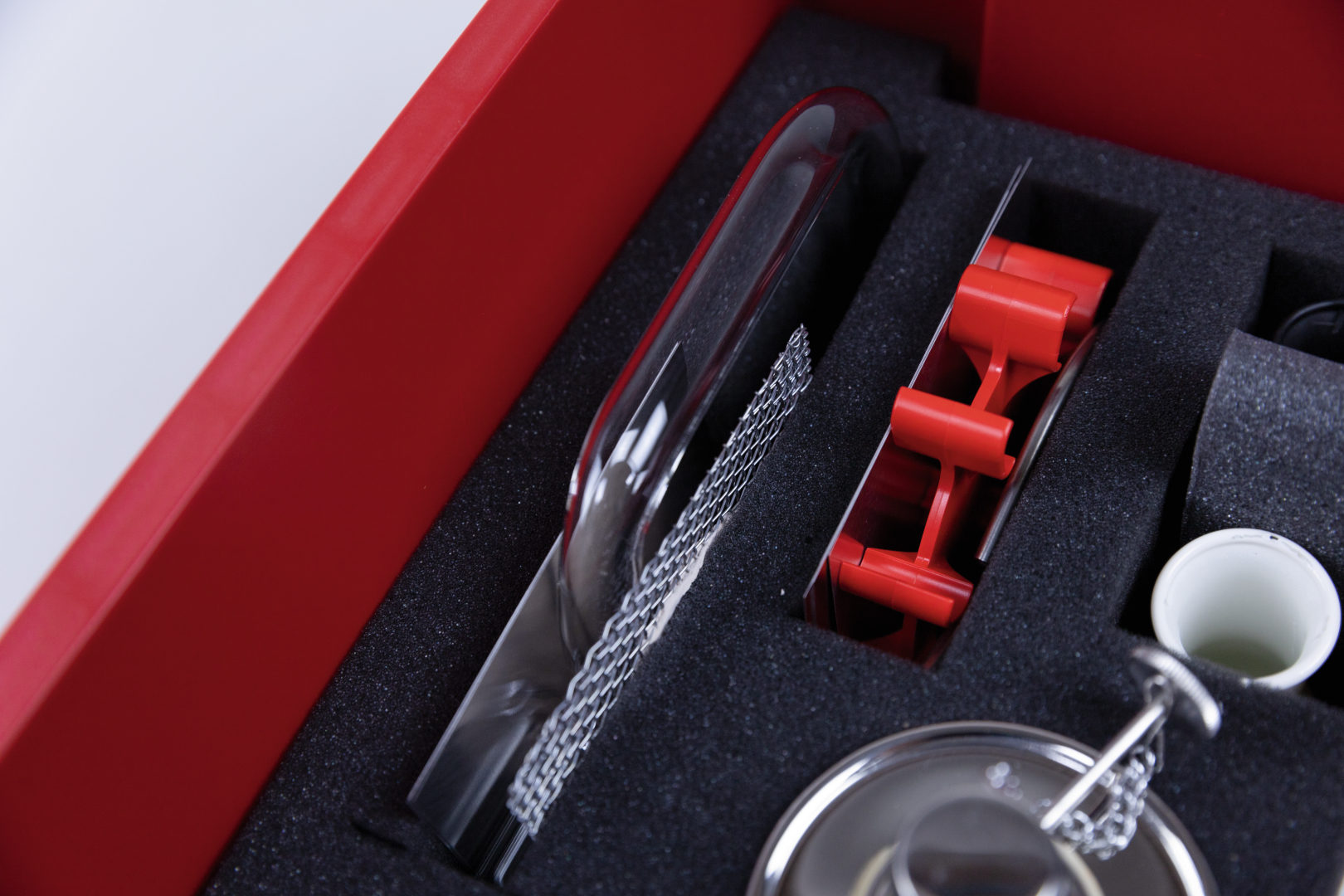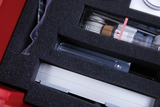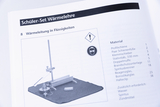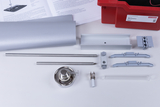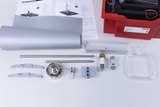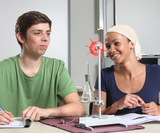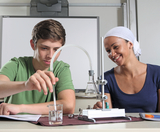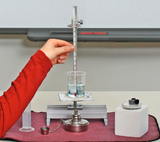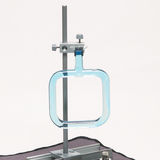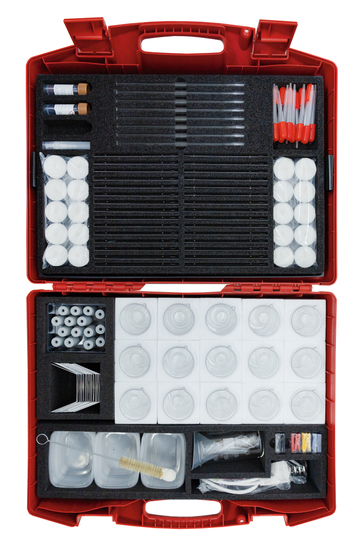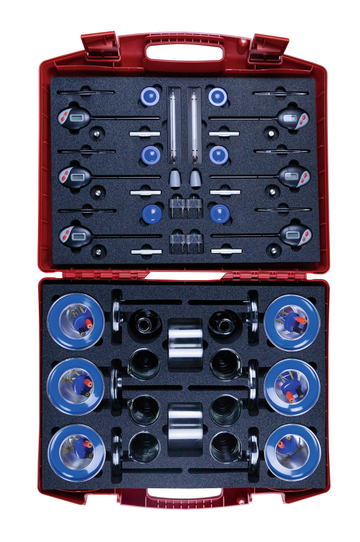Students kit Heat
This kit contains all the equipment and resources for basic experiments on thermodynamics in solid, liquid and gaseous bodies.
Apart from making simple temperature measurements, it is also possible to investigate the principles of how bodies behave in response to changes in temperature.
Further experiments allow for closer observation of the emission, reflection and absorption of thermal energy as well as how it propagates via heat radiation, conduction and convection. Determination of specific heats and investigation of the processes of evaporation, boiling and condensation round of the range of available experiments.
This kit covers the following basic laws of physics:
- Boyle’s law
- Gay-Lussac’s law
- Fourier’s law
- Stefan-Boltzmann law
This experiment explains how a thermometer works. In addition, statements are made about how the supply of heat is related to a resulting change in temperature.
This experiment explains how a thermometer works. In addition, statements are made about how the supply of heat is related to a resulting change in temperature.
This experiment investigates the behavior of liquids in the heating and cooling process. In addition, it is investigated why the liquid behaves in this way.
This experiment shows the properties of a solid, after its heating.
This experiment shows the properties of a solid according to its heating.
This experiment investigates the thermal conductivity of different materials.
In this experiment, the thermal conductivity of water is determined.
The experiment examines the behavior of a bimetallic strip when it is heated and then cooled.
The experimental setup illustrates the radiation of heat and the associated transfer of heat through the air.
In this experiment, conclusions are drawn as to which properties of a substance are necessary so that thermal radiation can be absorbed.
We will shortly provide you with a description of the experiment at this point.
We will shortly provide you with a description of the experiment at this point.
We will shortly provide you with a description of the experiment at this point.
We will shortly provide you with a description of the experiment at this point.
We will shortly provide you with a description of the experiment at this point.
We will shortly provide you with a description of the experiment at this point.
In this experiment, the heating and cooling process of water is observed.
The experiment explains the principle of the reflection of thermal radiation and its effect on the temperature.
We will shortly provide you with a description of the experiment at this point.
We will shortly provide you with a description of the experiment at this point.
- 1 × Heat resistant pad, 50x35 cm
- 1 × Storing tray, deep, red
- 2 × Bimetallic strip
- 1 × Erlenmeyer flask 25 ml, black
- 1 × Erlenmeyer flask 25 ml, white
- 1 × Carton for SEG (large tray)
- 1 × Glass tube, bent right angled, 50 mm legs
- 1 × Glass tube, straight, 100 mm with jet
- 1 × Glass tube, straight, 200 mm
- 1 × Glass tube, straight, 50 mm
- 2 × Rubber stopper 24/18 mm with bore 6 mm
- 1 × Rubber stopper 24/19 mm, 1 hole 8mm
- 1 × Rubber stopper 34/28 mm, 1 hole 8 mm
- 1 × Holding clip on rod, withmetal spring, 16 mm Ø
- 1 × Retaining ring 30 mm Ø
- 1 × Retaining ring 75 mm Ø
- 1 × Calorimeter for students
- 1 × Heat protection gauze
- 2 × Tubular clip, 5x4 mm
- 1 × Lid for 75028 + 75038
- 2 × Clamp slider
- 1 × Plastic box 140/50/35 mm
- 1 × Colouring agent, red for lab use only
- 1 × Measuring cylinder, PP, 25 ml
- 1 × Metal axis, 125 mm
- 1 × Metal body, aluminium
- 1 × Rail, 180 mm
- 1 × Plastic test tube, 100 mm
- 1 × Paddle wheel
- 1 × Foam insert for 48500, 385x279x90 mm
- 1 × SEG Lidfoam, grey 20 mm
- 1 × Spirit burner, metal
- 1 × Thermometer, red spirit -10+110°C:1°C
- 1 × Heat conductivity bows set of 4 pcs.
- 1 × Convection tube, glass students type
- 1 ×
- 1 ×
- 2 ×
- 1 ×
- 5 ×
- 1 ×
- 1 ×
- 2 ×
- 1 ×
- 2 × Bosshead with slit
- 1 × Silicone tubing, 7/1,5 mmper m
